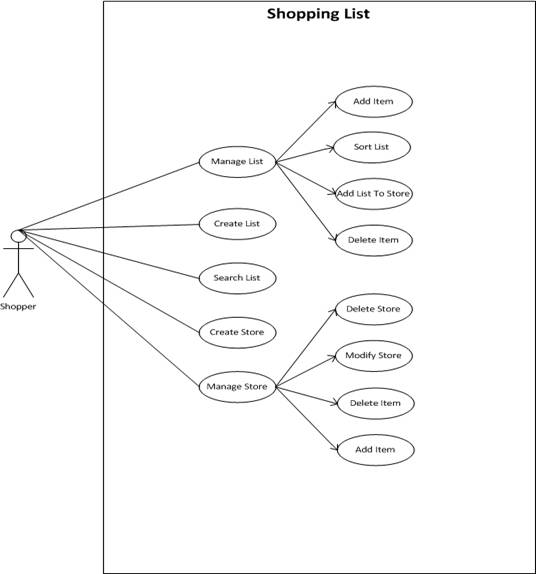Introduction
Purpose
The purpose of this Shopping Cart Android Project document is to describe the architecture and system design of the Shopping Cart software described in the Shopping Cart Business Requirements Document. The intended audiences of this document are the Android developers, QA testers, and system owners that will collaboratively develop the system and possibly extend the system in the future. The Shopping Cart software is design to create and managed grocery shopping lists.
Scope
The document describes the design and implementation details of the Shopping Cart software. The major functions of the Shopping Cart software are to create and manage shopping lists/stores. The Shopping Cart software is to be developed for the Android platform using the object oriented design methodology.
- Shoppers must access the Shopping Cart application from an Android device (Smart Phone, etc.)
- The Shopping Cart application must be accessed by the shopper to create and manage shopping lists/stores.
- The Shopping Cart application is a standalone application with no external interfaces.
- All interfaces are managed by the Android system.
- The Android system’s local database would be used to store all data saved by the Shopping Cart application
Overview of Document
The Software Design Document is divided into five sections with subsections. The sections in this Software Design Document are:
- Introduction
- Use Case Realizations
- Architectural Design
- Data Structure Design
Glossary
Android – programming language
Business Requirements Document – a document that describes the requirements for a business process that must be delivered to provide value.
Developers – person who writes the code or develop the software
Interfaces – a piece of software\hardware that provide access to a system’s resources
QA Tester – software tester who ensures software quality
Standalone Application – an application that does not interact with any external interfaces.
System – software to be developed
Systems Owner – person(s) that owns the system
Testers – person(s) who perform the testing of the software to ensure quality of the end product
Use Case Realizations
The use case realizations are depicted by the use case diagram and the use case narratives.
Actors
Shopper
Information: The Shopper is a user who uses the Shopping Cart application to simplify their shopping experience by creating grocery shopping lists, creating stores, associating lists to stores, associating items to categories/aisles, and saving the list/contents for current or future use.
Use Case Diagram


Plz send me the source code.
Hello Sir, Please Provide me a source code related to shopping cart!! Thank you!!
please give source code
Hello, please give me the source code related to the shopping cart.
Please give the source code related to shopping cart
Please Share source code for this project.
Pls send me the source code
Pls send me the source code
Please send me the source code
Please send me the source code
please send me the source code